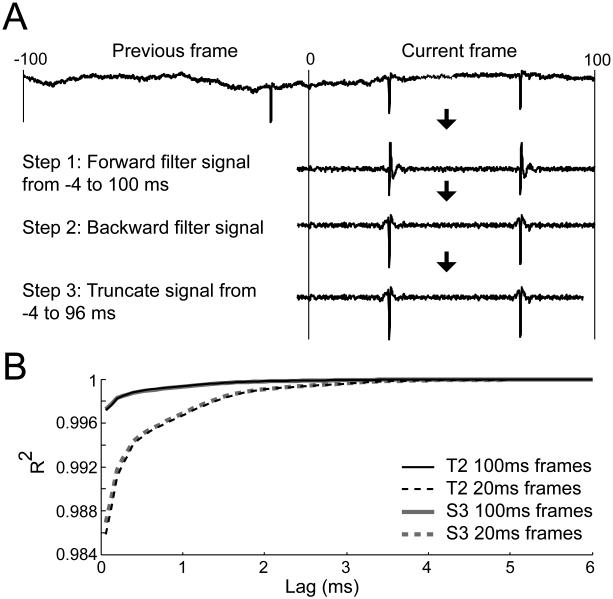Figure 5.
Near real-time non-causal filtering. (A) Neural signals were non-causally filtered in (near) real time in three steps. We show the case using 100 ms frames, but different frame durations can be used. First, the signal from 4 ms before the frame to the end of the frame is forward filtered. Second, this signal is backwards filtered. Third, the last 4 ms of the signal is truncated to eliminate edge effects on the forward end. This method allows for non-causal threshold crossing to be computed with a 4 ms delay relative to the kinematics (B) Analysis showing that 4 ms is the minimum delay needed to accurately non-causally filter neural signals in near real time. The Pearson correlation coefficient was calculated between non-causally filtered signals using all time points and signals filtered using the method described in (A) in which the delay was varied. Results are shown for T2 (black) and S3 (grey curves) using either 100 ms (solid) or 20 ms (dashed curves) frames.

